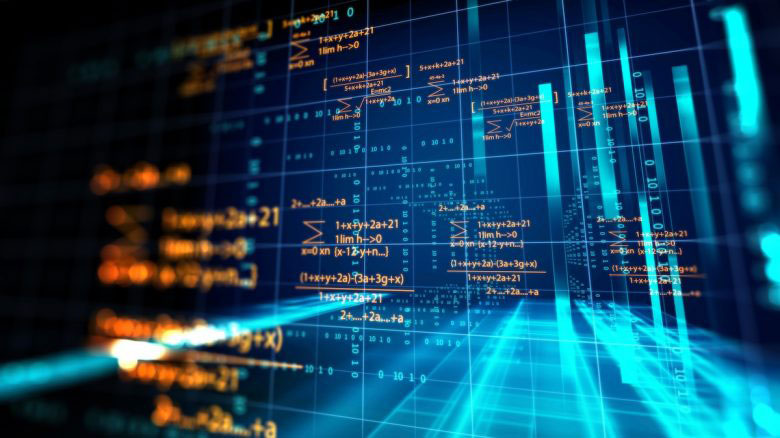A Guide to Algorithmic Trading: Concepts and Case Studies
Susan Kelly
Jan 18, 2024
Using a computer program that follows a defined set of instructions (an algorithm) to place a transaction is algorithmic trading. There is a theoretical possibility that the transaction can make money faster and more frequently than a human trader can do.
Any mathematical model can be used to define the set of instructions. Algorithmic trading, in addition to providing the trader with profit chances, also increases market liquidity and streamlines trading by removing the influence of human emotions.
What Does It Mean to Be a Signal?
A quant may do a stock-market study and see that activity in one area generally leads to activity in another. As a next step, she'd create an algorithm that operates like a net: it purchases and sells at predetermined intervals, capturing a portion of the profits in the process.
For example, a long-short portfolio manager may utilize credit card receipts from a vendor like Square as the signal for an algorithm he is trying to create.
What Is the Signal of This Algorithm?

'Mean reversion,' another term for the idea that prices would eventually average out, is the basis for this Quantopian algorithm.
It uses Bollinger Bands, a well-known approach, to rank a list of equities from those with share prices that are too high to those with share prices that are too low. The high ones are then sold, and the low ones are purchased. The high ones sink, while the low ones climb toward the middle as time goes on.
Trading Algorithmic Strategies

Algorithmic trading strategies necessitate the identification of a profitable opportunity, either in terms of increased revenues or decreased costs. The following are typical algo-trading strategies:
1. Trend-following Techniques
In most algorithmic trading systems, moving averages, channel breakouts, price movements, and other technical indicators are followed. Automated trading techniques that don't necessitate making predictions or price projections are the simplest and easiest to apply.
Profitable trades are begun using uncomplicated and straightforward algorithms that don't require extensive predictive analysis. It's common to use the 50- and 200-day moving averages.
2. Opportunities for Arbitrage
Dual-listed stocks can be bought at a lower price and sold at a higher price in one market, which provides a risk-free profit or arbitrage opportunity. The same strategy may be applied as long as there are price differences between stocks and futures. Using an algorithm to find pricing discrepancies and effectively placing orders can benefit.
3. Indicator Fund Re-balancing
Index funds are rebalanced at predetermined intervals to keep their portfolios in line with their benchmark indexes. Good chances for algorithmic traders arise from the index fund rebalancing process, which produces predicted transactions that give 20 to 80 basis points gains depending on the number of stocks in the index fund. With the help of automated trading systems, these deals may be completed promptly and at their most advantageous pricing.
Trading Algorithms: The Advantages
Allowing computers to monitor and execute live transactions has several advantages, including:
· Reduces emotions and overtrading
Due to the strict adherence to a preset set of trading instructions, algorithmic trading reduces the impact of trading-related emotions. Emotions such as fear and greed can contribute to poor decision-making when trading. Automated trading makes it easier for traders to stick to their strategy.
To prevent overtrading, which occurs when specific traders purchase and sell at every opportunity, automating the process helps.
· Ensures reliability
Algorithms (Algos) can also be used to achieve consistency in trading. The most challenging part of trading is developing a trading strategy and executing it. Even if a trader has a winning strategy, their chances of success are significantly reduced if they don't follow all of the regulations.
A human trader may grow disillusioned after losing two or more consecutive trades and decide to stop trading altogether. The trader's prospects of winning in subsequent rounds are effectively wiped away if they quit early. Auto trading is a great way to stay on track with your trading strategy and improve your success odds.
· Quickly generates criterion orders
The speed of algorithmic trading makes it a good alternative for investors because every second counts in trading. People can't keep up with the pace of the market, which is why computers can react quickly to changes in the market and produce orders for trading.
Automating the trading process can also cause human errors, such as getting out or in too early or late in the day, which can significantly impact the day's trade.
The Drawbacks of Algorithmic Trading
Algorithmic trading, like other mechanical systems, is complex and susceptible to errors.
· Technological flops
Orders might be erroneously placed, duplicated, or not transmitted to the market due to internet connectivity failures, power outages, and computer breakdowns, among other things.
· Disparity between strategy and results
Because of this, automated trading systems can provide outcomes that differ from those created by a specific system's algorithm. Automated trading systems must be constantly checked to avoid mechanical breakdowns.
· Over-optimization risk
Traders can optimize their trading systems using backtesting techniques. However, these systems may perform poorly in a real market. If traders over-optimize, they may end up with a trading strategy that is well suited to historical market data but is unreliable in the present market.
Some traders believe that a trading strategy should produce 100% winning transactions without any space for losses. This is a misconception.







